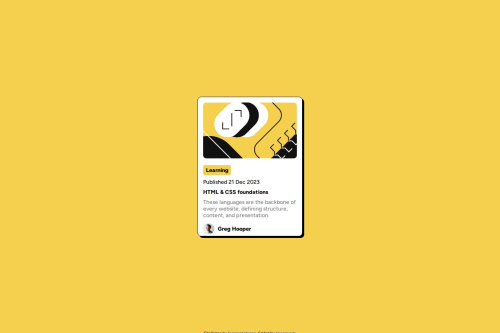Blog preview card with HTML and CSS

Solution retrospective
Being capable to complete this project, through the hardships.
What challenges did you encounter, and how did you overcome them?making the box-shadow expand as you hover around the card, but I was able to fix it with a little search on the internet and I found the solution. I thought it was hard to do but I was wrong.
What specific areas of your project would you like help with?N/A
Please log in to post a comment
Log in with GitHubCommunity feedback
- @kimkawachi
Using semantic HTML will explain more the workflow, reduce the use of unnecessary Divs and help with accessibility. Not declaring height on the card will allow for better responsiveness. Font sizes can be adjusted using rem units. Transition-timing-function property will make the effect look better and there's is also a shorthand property for Transition: where you give 3 or 4 values in one line.
Marked as helpful
Join our Discord community
Join thousands of Frontend Mentor community members taking the challenges, sharing resources, helping each other, and chatting about all things front-end!
Join our Discord